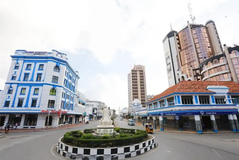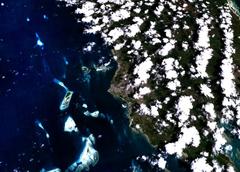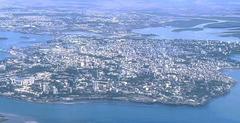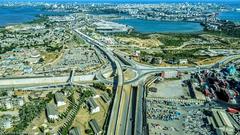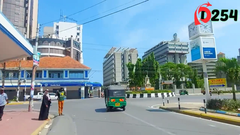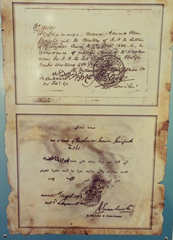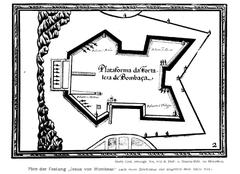
Mombasa Visiting Hours, Tickets, and Historical Sites Guide
Date: 14/06/2025
Introduction
Mombasa, Kenya’s vibrant coastal city, is a captivating destination shaped by over a millennium of history and multicultural influences. Serving as a key Indian Ocean port since the 10th century CE, Mombasa’s heritage is a tapestry woven from African, Arab, Persian, Indian, and European threads. The city’s unique Swahili culture, visible in its architecture, festivals, and cuisine, invites visitors to explore a living history. This guide covers Mombasa’s most significant historical sites, including Fort Jesus and Old Town, alongside practical visitor information—such as visiting hours, ticket prices, guided tours, and accessibility—to ensure a memorable and well-informed journey (wildlifekenyasafari.com; planetware.com; tourkenya.co.ke).
Table of Contents
- Early Origins and Swahili Foundations
- Portuguese Era and Fort Jesus: Visiting Hours, Tickets, and Tours
- Omani and Arab Influence: Exploring Mombasa Old Town
- Colonial Period and Modernization
- Post-Independence Era and Contemporary Significance
- Architectural Heritage and How to Visit Key Sites
- Cultural Significance and Living Traditions
- Mombasa’s Role in Regional and Global History
- Preservation Efforts and Visitor Experience Enhancements
- Practical Visitor Information
- Frequently Asked Questions (FAQ)
- Conclusion and Travel Resources
Early Origins and Swahili Foundations
Mombasa’s history stretches back over a millennium, with archaeological and written records indicating its establishment around the 10th century CE (wildlifekenyasafari.com). Its strategic coastal position made it a central hub in the Indian Ocean trade network, attracting merchants from Arabia, Persia, and India. The resulting Swahili culture is a blend of African, Arab, and Persian influences, evident in the city’s language, architecture, and traditions. Notably, Moroccan explorer Ibn Battuta visited Mombasa in 1332, describing it as a prosperous Islamic town with wooden mosques and a seafood-rich diet.
Portuguese Era and Fort Jesus: Visiting Hours, Tickets, and Tours
The arrival of Vasco da Gama in 1498 marked the beginning of Portuguese interest. By 1593, the Portuguese built Fort Jesus—a monumental military fortress designed by Giovanni Battista Cairati—to secure their trade route (planetware.com). The fort has witnessed sieges, conquests, and changing rulers, reflecting the city’s turbulent history.
Fort Jesus Visitor Information:
- Opening Hours: Daily, 8:00 AM – 6:00 PM
- Tickets: About 600 KES for adults; discounts for children and students
- Guided Tours: Available on request, providing in-depth historical insights
- Accessibility: Some ramps and options for visitors with limited mobility, but historic architecture presents challenges
- Highlights: Explore chambers, dungeons, ramparts, and exhibitions on Swahili culture and colonial history
Fort Jesus is a UNESCO World Heritage Site and a must-visit for history enthusiasts. Early mornings or late afternoons are best for avoiding crowds (tourkenya.co.ke).
Omani and Arab Influence: Exploring Mombasa Old Town
After the Portuguese, Omani Arabs captured Mombasa in 1698, ushering in a golden age of trade and cultural development. The Old Town is characterized by narrow, winding streets, intricately carved wooden doors, and coral stone buildings (secretattractions.com). Key sites include:
- Swahili House Museum: Showcasing traditional coastal life
- Mandhry Mosque: One of East Africa’s oldest mosques, dating from 1570
- Historic Markets: Experience vibrant commerce and local spices
Visiting Tips:
- Take a guided walking tour for deeper insights
- Visit in the morning for bustling market scenes
- Dress modestly and ask permission before photographing people
Colonial Period and Modernization
British colonial rule in the late 19th century transformed Mombasa into the main port for the Uganda Railway, attracting Indian, Asian, and European communities (planetware.com). This multicultural influx is reflected in the city’s religious architecture—mosques, Hindu temples, and churches stand side by side.
Post-Independence Era and Contemporary Significance
After Kenya’s independence in 1963, Mombasa retained its role as a principal port and cultural hub. Major festivals, such as the Mombasa Carnival, blend Swahili, Arab, Indian, and European influences. The city’s artistic and culinary scenes continue to thrive, with vibrant markets, music, and dance (tourkenya.co.ke).
Architectural Heritage and How to Visit Key Sites
Fort Jesus
Guided tours, exhibitions, and panoramic coastal views await at this historic fort. The museum inside features maritime artifacts, ceramics, and colonial-era relics.
Old Town
Labyrinthine alleys lined with carved doors and coral facades. Notable sights include the Swahili House Museum and Mandhry Mosque.
Jumba la Mtwana Ruins
Located 25 km north, these 14th-century coral stone ruins offer a quieter historical experience (secretattractions.com).
Mombasa Tusks
Iconic aluminum arches on Moi Avenue, installed in 1952 to commemorate Queen Elizabeth II’s visit (betterke.com).
Cultural Significance and Living Traditions
Mombasa’s living heritage is celebrated through festivals, traditional dances like Taarab and Chakacha, and a fusion cuisine including biryani, pilau, and samaki wa kupaka (tourkenya.co.ke). Artisan markets showcase Akamba woodcarving and Swahili crafts (betterke.com).
Mombasa’s Role in Regional and Global History
Historically, Mombasa has been a gateway for trade, migration, and cultural exchange across Africa, the Middle East, and Asia. Its religious diversity and multi-ethnic population are reflected in its architecture and daily life (planetware.com).
Preservation Efforts and Visitor Experience Enhancements
Local authorities and heritage organizations work to preserve and restore Mombasa’s historic sites. Museums, festivals, and cultural centers enhance the visitor experience, ensuring that traditions remain vibrant (tourkenya.co.ke).
Practical Visitor Information
Best Time to Visit
- June to September: Warm, dry, and ideal for sightseeing and beaches (globalhighlights.com)
Health and Safety
- Carry bottled water; take malaria precautions; beware of petty theft in crowded places (howsafe.net)
- Use registered taxis or ride-hailing apps at night (travellikeaboss.org)
Transportation
- Arrive via Moi International Airport; local options include tuk-tuks, matatus, and taxis (visit-mombasa.com)
- Car rentals available; expect left-hand driving and city traffic
Currency and Payments
- Kenyan Shilling (KES) is the local currency; cash preferred in markets, cards accepted in major establishments
Accommodation
- Wide range: luxury resorts (Nyali, Bamburi), guesthouses, Airbnbs. Book ahead in peak season
Connectivity
- Local SIM cards (Safaricom, Airtel) recommended for coverage and data (visit-mombasa.com)
Cultural Etiquette
- Dress modestly, especially in Old Town and religious sites
- Greet with “Jambo” and a handshake
- Ask before taking photos of people
Frequently Asked Questions (FAQ)
Q: What are Fort Jesus visiting hours?
A: Open daily, 8:00 AM – 6:00 PM.
Q: How much are tickets to Fort Jesus?
A: Approximately 600 KES for adults; discounts for children/students.
Q: Are guided tours available?
A: Yes, at Fort Jesus and Old Town—highly recommended for deeper understanding.
Q: How accessible are the historical sites?
A: Fort Jesus offers ramps but has some uneven surfaces; Old Town’s narrow, cobbled streets may pose challenges.
Q: Best time to visit Mombasa?
A: June–September for dry, pleasant weather.
Q: Are tickets available online?
A: Yes, through official tourism websites and at the entrance.
Q: Is Mombasa safe for tourists?
A: Generally safe; exercise standard precautions, especially at night and in crowds.
Conclusion and Travel Resources
Mombasa stands as a living museum of coastal Kenya’s history and culture. From the formidable Fort Jesus to the bustling alleys of Old Town, every street tells a story of resilience and multicultural exchange. Careful planning—taking note of visiting hours, ticket prices, and local customs—will ensure a rewarding visit. Support local artisans, attend cultural events, and use travel apps like Audiala for real-time guidance and updates.
For in-depth information, practical travel tips, and the latest on Mombasa’s attractions, download the Audiala app and explore our related articles. Follow us on social media for travel inspiration and exclusive offers.
References
- History of Mombasa – WildLifeKenyaSafari
- Mombasa: Tourist Attractions – PlanetWare
- Mombasa Travel Guide – TourKenya
- Mombasa’s Lesser Known Historical Sites – Secret Attractions
- Exploring Mombasa’s Cultural Heritage – BetterKe
